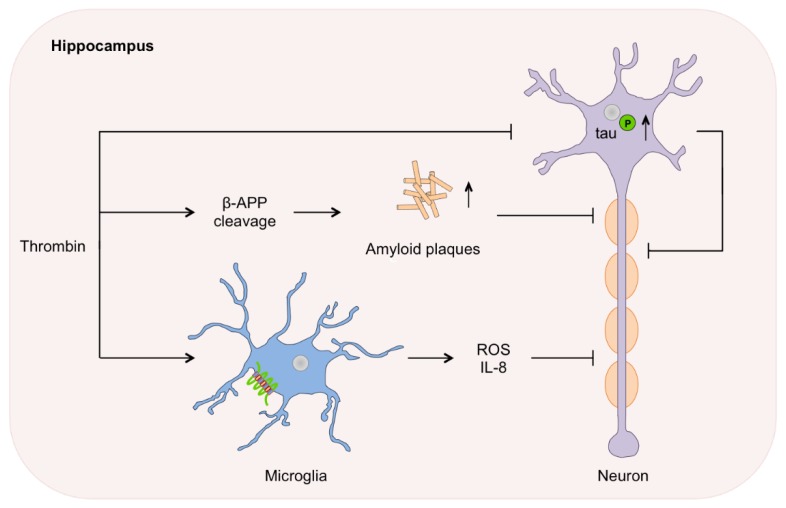Figure 2.
Alzheimer’s disease. In brains of patients with AD, thrombin is present in senile plaques, amyloid deposits, microvessels and neurofibrillary tangles. Thrombin-dependent activation of PAR1/4 results in hyperphosphorylation and aggregation of tau protein leading to apoptosis of predominantly hippocampal neurons. Furthermore, thrombin induces the cleavage of amyloid-β precursor protein (β-APP) leading to the amyloid β (Aβ) accumulation (amyloid plaques), which have neurotoxic capacity. Additionally, microglia activation by thrombin leads to the generation of reactive oxygen species (ROS) and proinflammatory proteins e.g., IL-8.

